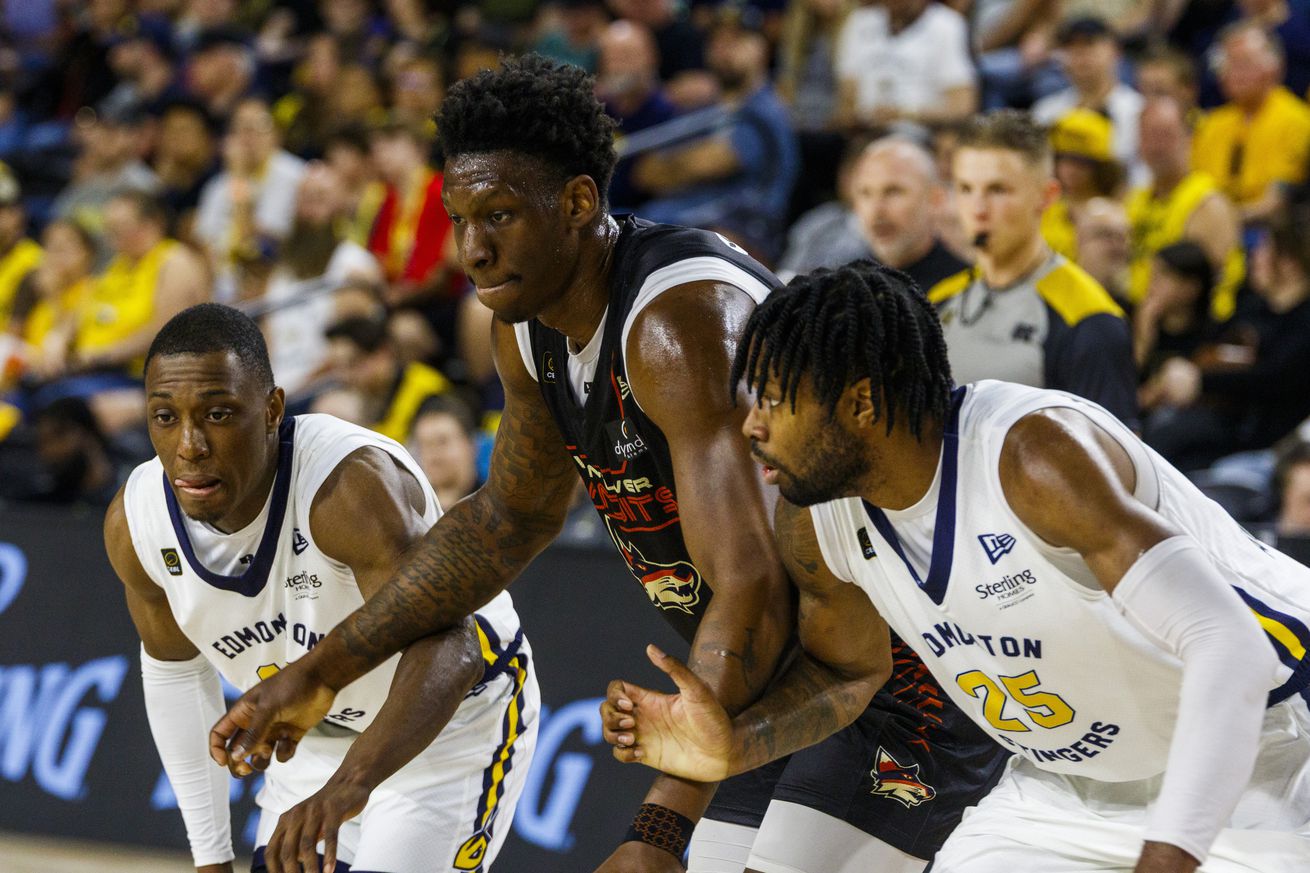
With countless Canada Basketball Alum having stints in the league, the CEBL’s role continues to be evident.
With the championship on the line tonight, it’s the perfect opportunity to dive deeper into one of the storylines that has been present throughout the last stage of the playoff run. For back-to-back years, there have been four Canadians playing in the finals. This year, three of those are starters.
While a fairly big moment for Canadian basketball, this hype has been building for years now. Some recent developments have demonstrated just how much the program is growing: A bronze medal in the summer of 2023, an appearance in the Paris Olympics, and another Canadian winning the NBA MVP. But while these moments take the spotlight, there’s a ton of work being done behind the scenes, without as much recognition.
Take for instance the 2023 FIBA World Cup bronze medal team. While most people can name many of the men on that roster, it would likely be more challenging to list those that actually helped Canada qualify for that tournament. In fact, the final victory that punched Canada’s ticket to FIBA was headlined by a team-leading 16-point performance from Kassius Robertson, along with the contributions of guys like Aaron Best, Kalif Young, Thomas Kennedy, Thomas Scrubb, and Owen Klassen. Although only 12 players made the roster for the actual World Cup, 31 players are listed as contributing to that medal run.
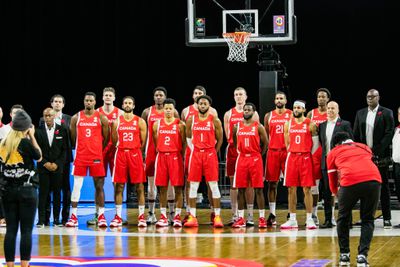
Photo by Ron Palmer/SOPA Images/LightRocket via Getty Images
The national program has progressed enough that we’re developing a ton of talent, and they’re going out and making us proud on the biggest stages. While there are truly countless people, players, coaches, support staff, trainers, parents, and supporters who have helped make this happen, I wanted to take a moment to acknowledge one that has had a role in the last few years especially: The CEBL.
Every single one of the guys listed above who helped Canada qualify for the FIBA World Cup have also played in the CEBL. In fact, when looking at the 31-man roster, that list only gets longer. 18 of the players listed on the Canadian FIBA world cup roster from that year have, at one point, been an active CEBL player. If you start to look at other competitions over the years, the cross-over between the league and those who have represented Canada in competition gets even more significant.
Why?
The CEBL is designed to develop Canadian talent. On every team, 8 of the 12 players on an active roster must be Canadian. Moreover, two of the players on the floor must be Canadian at all times. While those seem like arbitrary rules, it prevents import players from taking priority spots on rosters or minutes in games. What those rules don’t do is soften the playing field. Since teams are able to have up to four import players on their active roster and 6 on their overall roster, players with NBA, G-League, and international experience from abroad help raise the level of competition. Players like Ahmed Hill, Cat Barber, Xavier Moon, and Khalil Ahmad are all examples of guys who have played huge roles in the league and have created a competitive environment for our own talent to thrive in.
Beyond developing current Canadian talent, the league also instituted a draft of post-secondary players starting with the league’s formation in 2019. At its inception, each team took two players from eligible university athletes. That has grown to a 3-round draft that incorporates both USPORTS and the CCAA. They are able to train and play alongside teammates with vast professional experience that they can take back to their respective programs to raise the bar internally as well.
While there are plenty of examples to choose from of Canadian talent that have played and developed in the CEBL, we can take a moment to look at the past, present and future of this synergistic relationship between our national team and league.
Lloyd Pandi first made his way into the CEBL through the draft in 2020, selected fourteenth overall by the Ottawa Blackjacks. A native of Ottawa, and already playing for the local Carleton University Ravens, he was fresh off a myriad of individual accolades including the Carleton MVP, OUA rookie of the year, and the U SPORTS Rookie of the Year. He was named the CEBL’s U Sports Player of the Year before returning to Carleton to complete another award-winning season to collect a second U Sports championship. He proceeded to be drafted into the league again, now by the Niagara River Lions, winning the CEBL U Sports Player of the Year a second time. When he returned to the league on a regular contract, he spent a year in Niagara before returning to Ottawa where he led the league in steals and won Defensive Player of the Year. On the national stage, he was added to Canada’s 2022 AmeriCup roster after his first two seasons in the CEBL. He averaged almost 6 points and 3 rebounds in 19 minutes per game, helping the team place fourth in the tournament. Now, he continues to represent Canada on the international stage in the 2025 AmeriCup qualifiers.
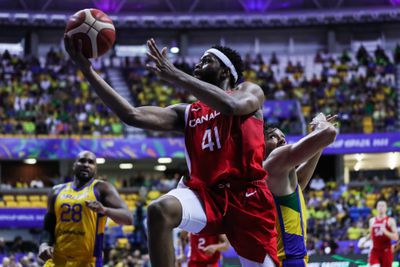
Photo by Wang Tiancong/Xinhua via Getty Images
Thomas Kennedy boasts a similar success story, playing for the University of Windsor and collecting MVP, First-Team, and Player of the Year awards at a variety of levels. He was drafted three consecutive seasons into the CEBL starting in 2019 for his phenomenal post-secondary performances. He spent seasons with the Bandits where he won the 2022 CEBL U SPORTS Player of the Year award, the Honey Badgers, and with the 2023 Championship Shooting Stars team. Internationally, he played in the AmeriCup qualifiers in 2023 and now again in 2025.
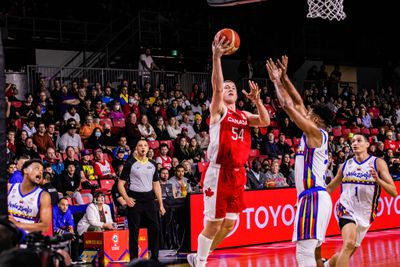
Photo by Ron Palmer/SOPA Images/LightRocket via Getty Images
Kadre Gray played for Laurentian University and was drafted into the league in 2020 by the Honey Badgers. He returned to the league for 5 years, appearing in 72 games and becoming the CEBL Canadian Player of the Year in 2023 with the Blackjacks, averaging 16 points and leading the league with 6 assists per game. He was also on the roster for the 2023 AmeriCup Qualifiers, alongside Pandi and Kennedy.
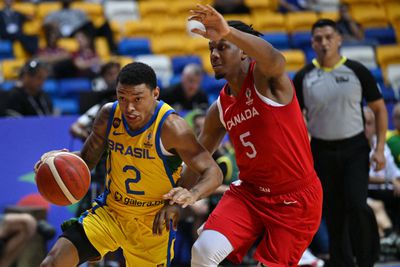
Photo by NELSON ALMEIDA/AFP via Getty Images
It would be easy to continue. Brody Clarke, JV Mukama, David Muenkat, Aaron Rhooms, and Keevan Veinot are just a few more who have all been drafted by and played in the CEBL and have represented Canada on the international stage.
From here, the future just gets brighter. The unique opportunity to play with professionals and develop our national players can’t be overstated. At the start of the season, I had the opportunity to talk with James Derouin, the current GM of the Ottawa Blackjacks. As someone who’s been with the Blackjacks since their inception, led the University of Ottawa Gee-Gees since 2010 to become the winningest coach in school history, and served on the coaching staff on the U17 FIBA World Championships, his role with development of Canadian talent is obvious.
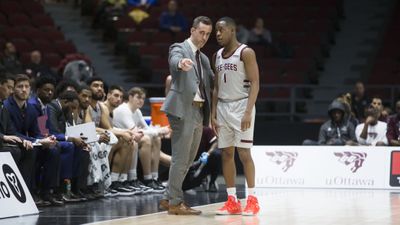
Photo by Sean Burges/Icon Sportswire via Getty Images
When asked about “Developmental Player” contracts and the draft in the CEBL, he didn’t have enough good things to say. He talked about some of the Blackjack’s draftees this year, and the importance of how it helps players grow. He said their first round pick, Justin Ndjock-Tadjore “loves coming here” and that the other players “gas (him) up”. It’s an opportunity he wouldn’t get elsewhere, and helps him continue to develop his skills and confidence as a player.
While Justin is the only Blackjacks developmental player that made the final active roster, their other draftees and two Gee-Gees players still attend practices and games. Owen Kenny, who would “probably be the youngest guy at a training camp in the history of the CEBL” was an all-Canadian freshman whose skills and size fit the “national team profile”. His ability to shadow the Blackjacks and learn with them could be a huge asset as he looks towards his future in professional basketball.
In Niagara, Gatluak James is another developmental player who is one of only two players that have appeared in all of the River Lions’ games. To show up to the reigning champs and provide solid minutes is impressive enough, but he is actively carving out a role on that team.
While the CEBL continues to grow, its role in developing Canadian talent will undoubtedly continue. The best part is, we’re not even to the halfway mark of this season. As it continues, tune in to see a few of our current national team players like Prince Oduro, Quincy Guerrier, and Marcus Carr go toe-to-toe with some of Canada’s current and future national talent.